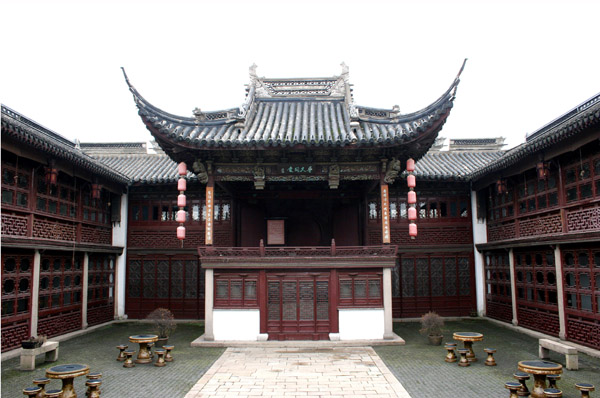
Buildings constructed by architects of Xiangshan School. [Photo provided to chinadaily.com.cn]
Xiangshan Mountain, located by the side of Taihu Lake in Suzhou city, is home to skilled architects known as “Xiangshan School Craftsmen”.
The mountain, with a history of more than 2,500 years, occupies some 40 square kilometers that are home to 17,000 people in 108 villages, such as Huangdun, Waitang and Shuiqiao.
Xiangshan School is an architect group made up mainly of carpenters but also including bricklayers, lacquerers, sculpture technicians, colored-drawing craftsman, and other artisans. The school enjoys a long history that originated in the Spring and Autumn Period (770-476 BC), was fully developed in the Tang (AD 618-907) and Song (960-1279) dynasties, reached its height in the Ming (1368-1644) and Qing (1644-1911) dynasties and started to decline in the Republic of China period (1912-1949). In recent years, though revitalized a little, the art form is still in an endangered condition.
There are a number of well-known historical Xiangshan School masters, such as sculptor Yang Huizhi of the Tang Dynasty, Kuai Xiang and Yao Chengzu. Kuai was the designer of major buildings in the Forbidden City which were built in the Ming Dynasty. The Main Shrine Hall in Lingyan Mount Temple is a masterpiece of Yao who also wrote a book to record the traditional architecture techniques of the Xiangshan School. The book is highly valued as a literary history of Suzhou School architecture.